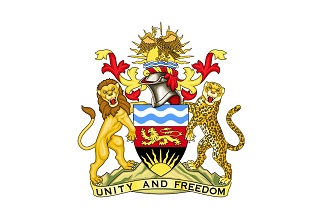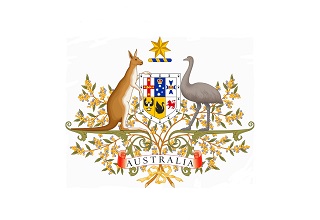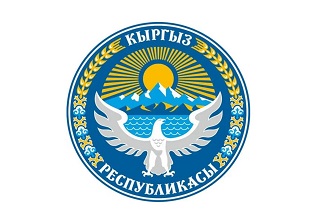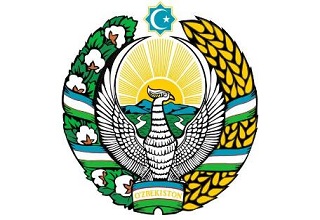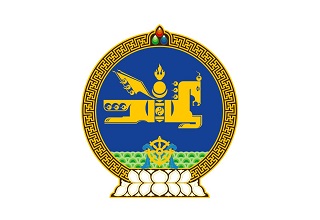Regarding the Inspection and Quarantine Requirements for Blueberry from Zimbabwe to China
In accordance with the regulations of the Chinese Customs and the Ministry of Lands, Agriculture, Fisheries, Irrigation and Rural Development of Zimbabwe on plant quarantine requirements for the import of fresh blueberries from Zimbabwe into China, effective immediately, the import of fresh blueberries from Zimbabwe that meet the following requirements is permitted.
I. Inspection and Quarantine Basis
(1) Biosafety Law of the People's Republic of China;
(2) Law of the People's Republic of China on Import and Export Animal and Plant Quarantine and its Implementing Regulations;
(3) Food Safety Law of the People's Republic of China and its Implementing Regulations;
(4) Measures for the Supervision and Administration of Inspection and Quarantine of Imported Fruits;
(5) Protocol between the Chinese Customs and the Ministry of Lands, Agriculture, Fisheries, Irrigation and Rural Development of the Republic of Zimbabwe on Plant Quarantine Requirements for the Import of Fresh Blueberries from Zimbabwe into China.
II. Permitted Import Commodity Names
Fresh blueberry, scientific name Vaccinium L., English name Blueberry.
III. Permitted Origin
Blueberry-producing areas in Zimbabwe.
IV. Approved Orchards and Packinghouses
Blueberry orchards, packinghouses, and quarantine facilities exported to China must be audited by the Zimbabwean Competent Authority and registered with China Customs. Registration information includes name, address, and registration code, enabling accurate traceability in the event that exported goods fail to comply with the relevant provisions of this announcement. The Zimbabwean Competent Authority must provide the registered list to China Customs before the annual export season.
V. List of Quarantine Pests of Concern to China Customs
1. Ceratitis capitata
2. Ceratitis cosyra
3. Ceroplastes destructor
4. Pseudococcus longispinus
5. Pseudococcus viburni
VI. Pre-Export Management
(I) Orchard Management
1. Orchards exporting blueberries to China should establish and implement Good Agricultural Practices (GAP) under the supervision of the Zimbabwean Competent Authority. This includes maintaining sanitary conditions in orchards, promptly removing fallen fruit, and implementing Integrated Pest Management (IPM), including pest surveys, monitoring, chemical or biological control, and agricultural practices, to avoid or minimize the occurrence of quarantine pests of concern to Chinese Customs.
2. Orchards exporting blueberries to China must have technical personnel under the guidance of the Zimbabwean Competent Authority or its authorized agencies conduct monitoring surveys for quarantine pests of concern to Chinese Customs. If quarantine pests of concern to Chinese Customs are detected, appropriate control measures must be implemented immediately.
3. Orchards exporting blueberries to China must maintain pest monitoring, survey, and control records for at least two years and provide them to Chinese Customs upon request. Pest monitoring and control records should at least include the monitoring period, the name of the pest detected, and the control measures implemented. Chemical control records should include detailed information such as the name, active ingredient, concentration, and application date of all chemical agents used during the growing season.
4. To combat the Mediterranean fruit fly and the small-striped fruit fly, orchards exporting to China must implement integrated field management measures, including fly monitoring and trapping, and the use of chemical or biological control methods to reduce fly population density. Monitoring should begin at flowering and continue until the end of blueberry harvest. Protein baits (such as Capilure for female fruit flies) and pheromone-containing fruit fly attractants (such as Trimedlure or Ego lure for male fruit flies) should be used to monitor and trap fruit fly populations. Protein baits and fruit fly attractants should be added and maintained according to the product instructions. One trap should be set up for every 5 hectares of orchards. Traps should be inspected at least once every two weeks, and effective control measures should be implemented as appropriate.
5. For other quarantine pests, such as the African wax scale, long-tailed mealybug, and dusky mealybug, blueberry orchards exporting to China must conduct field monitoring surveys during the blueberry growing season. From the budding stage to the harvest stage, blueberries should be monitored at least every two weeks, with a focus on checking branches, stems, leaves, and clusters for pest infestation. If scale insects or other quarantine pests of concern to Chinese Customs are detected, integrated management measures, including chemical or biological control, should be immediately implemented.
(II) Packaging Plant Management
1. Blueberry processing, packaging, storage, and shipping must be conducted under the supervision of the Zimbabwean Competent Authority or its authorized agencies.
2. During the packaging process, blueberries must be removed, sorted, and graded to ensure they are free of insects, mites, rotten fruit, branches, leaves, roots, and soil, ensuring they are free of quarantine pests of concern to Chinese Customs.
3. Packaging materials must be clean, unused, and comply with relevant Chinese plant quarantine requirements. If wooden packaging is used, it must comply with the International Standard for Phytosanitary Measures (ISPM 15).
4. If packaged blueberries need to be stored, they should be immediately stored separately to prevent reinfestation by pests. Each box must be labeled with the fruit name, country of export, place of origin (district or county), orchard name or registration number, and packing house name or registration number. Each box and pallet must be marked with "输往中华人民共和国" or "Exported to the People's Republic of China" in Chinese or English.
5. Before loading and shipping Chinese blueberries, containers must be inspected to ensure they are in good sanitary conditions. Necessary pest control measures must be taken during packing.
(3) Quarantine Treatment Requirements.
Blueberries shipped to China must undergo cold treatment or fumigation under the supervision of the Zimbabwean Competent Authority or its authorized personnel to eliminate fruit flies.
1. Cold Treatment. Cold treatment should be carried out in accordance with the Pre-Export Cold Treatment Operating Procedures (see Appendix 1) or the In-Transport Cold Treatment Operating Procedures (see Appendix 2), as well as the Supplementary Requirements for In-Transport Cold Treatment in Third Countries (see Appendix 3). The cold treatment index requirements must meet any of the following conditions:
(1) 1.11°C or below (pulp temperature), continuous treatment for 15 days or more;
(2) 1.67°C or below (pulp temperature), continuous treatment for 17 days or more;
(3) 2.22°C or below (pulp temperature), continuous treatment for 21 days or more.
2. Fumigation treatment. Blueberries exported to China by air should be fumigated with methyl bromide by personnel authorized by the Zimbabwean Competent Authority before shipment. The fumigation treatment indicators are as follows: temperature above 21.1°C, fumigant dosage of 32 g/m3, normal pressure fumigation duration of not less than 2 hours; and the minimum concentration during the fumigation period must be not less than 26 g/m3 after 0.5 hours and not less than 16 g/m3 after 2 hours.
(IV) Quarantine before export.
1. The Zimbabwean Competent Authority or its authorized personnel shall conduct random inspections on 2% of each shipment of blueberries exported to China. If no phytosanitary issues have occurred within two years, the sampling rate may be reduced to 1%.
2. If live quarantine pests of concern to Chinese Customs are detected, the entire shipment shall not be exported to China. The Zimbabwean Competent Authority shall investigate the cause and implement corrective measures. Inspection records shall be maintained and provided to Chinese Customs upon request.
(V) Phytosanitary Certificate Requirements
1. For blueberries that pass quarantine inspection, the Zimbabwean Competent Authority shall issue a phytosanitary certificate indicating the name or registration number of the orchard and packing house, as well as the container number, and the additional declaration "This consignment complies with the requirements specified in the Protocol of Phytosanitary Requirements for Export of Fresh Blueberries from Zimbabwe to China and is free from quarantine pests of concern to China.".
2. For shipments that undergo pre-export cold treatment, the phytosanitary certificate shall indicate the treatment temperature, duration, and name or code of the treatment facility. For goods that undergo cold treatment during transportation, the phytosanitary certificate should be marked with "Cold treatment in transit" and include the treatment temperature, start time, duration, container and seal numbers, and other information.
3. For goods that undergo pre-export fumigation, the dosage, duration, and temperature of methyl bromide used should be indicated in the "Quarantine Treatment" section of the phytosanitary certificate.
4. The Zimbabwean Competent Authority should provide a sample of the phytosanitary certificate to Chinese Customs before trade commences for record-keeping and verification.
VII. Entry Inspection and Quarantine and Disqualification Handling
Upon arrival of blueberries imported into China at the Chinese port of entry, Chinese Customs will conduct inspection and quarantine in accordance with the following requirements.
(I) Verification of Relevant Certificates and Labels
1. Verify that the imported blueberries have obtained the "Entry Animal and Plant Quarantine Permit."
2. Verify that the phytosanitary certificate complies with the provisions of Article 6, paragraphs 3 and 5.
3. Verify that the packaging complies with the provisions of Article 6, paragraph 2.
(II) Entry Inspection and Quarantine.
1. Blueberries imported into China must enter through ports permitted by Chinese Customs for fruit importation.
2. Inspection and quarantine will be conducted in accordance with Chinese laws, regulations, and national standards. Products that pass inspection and quarantine will be permitted entry.
(III) Disqualification Handling.
1. If a shipment is found to originate from an unregistered orchard, packaging plant, or quarantine facility, the shipment will not be permitted entry.
2. If quarantine pests of concern to Chinese Customs or newly emerged quarantine pests from Zimbabwe are found, the shipment will be returned, destroyed, or subjected to pest control.
3. If a shipment is found to be non-compliant with Chinese food safety laws, regulations, and national standards, the shipment will be returned or destroyed.
GACC
September 22, 2025
Pre-export cold treatment operating procedures
I. Type of cold treatment facilities
1. Pre-export cold treatment can only be carried out in cold storage rooms approved by the Zimbabwean Competent Authority.
2. The Zimbabwean Competent Authority or its authorized personnel are responsible for ensuring that the cold storage rooms used by exporters meet the standards and have refrigeration equipment that can enable the fruit to reach and maintain the required temperature.
3. The Zimbabwean Competent Authority or its authorized personnel must maintain a registration file for cold storage rooms approved for pre-export cold treatment of fruit to China. The file should include the following:
(1) The location and construction plan of all facilities, including the contact details of the owner/operator;
(2) The dimensions and capacity of the facilities;
(3) The type of insulation of the walls, floors and ceilings;
(4) The brand, model, type and capacity of the refrigeration compressor, evaporator and air circulation system;
(5) The temperature range of the equipment, the specifications and details of the defrost cycle control and any integrated temperature recording equipment.
4. Before the fruit export season begins, the Zimbabwean Competent Authority must submit a list and address information of registered cold treatment facilities to Chinese Customs.
II. Logger Type
The Zimbabwean Competent Authority or its authorized personnel must ensure that probes and temperature loggers meet the following requirements:
1. Probe temperatures must be between -3.0°C and +3.0°C, with an accuracy of ±0.15°C;
2. They must be able to accommodate the required number of probes;
3. They must be able to record and store processing data until inspection by the Zimbabwean Competent Authority;
4. They must be able to record all probe temperatures at least once per hour with the required accuracy, supervised by the Zimbabwean Competent Authority or its authorized personnel;
5. They must be able to print out the results, identifying each probe, time, and temperature, and indicating the logger model and container number.
III. Probe Calibration
Calibration must be performed using a standard thermometer approved by the Zimbabwean Competent Authority in a mixture of crushed ice and distilled water:
1. Any probe that reads outside of 0°C ± 0.3°C must be replaced with another probe that meets this standard;
2. Upon completion of processing, the Zimbabwean Competent Authority or its authorized personnel must verify the calibration value of the fruit temperature probe using the calibration method mentioned.
IV. Probe Insertion
1. The fruit on the tray must be pre-cooled and loaded into the cold treatment room under the supervision of the Zimbabwean Competent Authority or its authorized personnel. Pre-cooling can be done by the exporter himself.
2. At least two probes are used to measure the room temperature at the outlet and return air vents. At least four probes are installed to measure the fruit temperature:
(1) One is located in the center of the fruit in the middle of the cold treatment room;
(2) One is located in the corner of the top layer of fruit in the middle of the cold treatment room;
(3) One is located in the middle of the fruit near the return air vent;
(4) One is located in the corner of the top layer of fruit near the return air vent.
3. Probe installation and connection to the recorder must be completed under the supervision and guidance of the Zimbabwean Competent Authority or its authorized personnel.
4. The recorder may be activated at any time, but the treatment time will not begin until all fruit temperature probes have reached the specified temperature.
5. When using the minimum number of probes, if any probe fails for more than four consecutive hours, the treatment will be invalid and must be restarted.
V. Review of Treatment Results
1. If the treatment records indicate that all treatment parameters have been met, Zimbabwean Competent Authority officials may authorize the termination of treatment and the calibration of the probes. If the probe calibration results meet the requirements of Section 3, the treatment will be considered successfully completed.
2. The probes must be calibrated before the fruit is removed from the treatment room.
VI. Confirmation of Treatment Results
1. The printout of the temperature record will indicate that the required cold treatment has been completed.
2. The Zimbabwean Competent Authority or its authorized personnel must retain these records and statistical values until the treatment is confirmed to be successful. These records must be provided for review by China Customs upon request.
3. If the treatment fails to meet the required cold treatment requirements, the logger may be reconnected and treatment may be continued under the following conditions:
(1) The Zimbabwean Competent Authority or its authorized personnel confirms that the treatment conditions required by this protocol are still met;
(2) The time interval between the cessation and re-start is within 24 hours;
(3) In both cases, data collection may continue from the time the logger is reconnected.
VII. Loading into containers
1. Before loading, the container must be inspected by the Zimbabwean Competent Authority or its authorized personnel to ensure that it is free of pests and the entrance must be covered to prevent pests from entering.
2. Fruit must be packed in a building with insect-proof measures; or the exit of the cold storage room and the entrance of the container must be connected with insect-proof materials.
VIII. Sealing of containers
1. The Zimbabwean Competent Authority or its authorized personnel shall seal the container loaded with fruit with a coded seal, and the seal number must be indicated on the phytosanitary certificate.
2. Seals can only be opened by Chinese Customs at the port of entry.
IX. Storage of Fruit Not Immediately Boxed
Treatened fruit not immediately boxed may be temporarily stored under the supervision of the Zimbabwean Competent Authority or its authorized personnel:
1. If the fruit is stored in a cold treatment room, the door of the cold treatment room must be closed;
2. If the fruit needs to be transferred to another storage room, the method of transfer must be approved by the Zimbabwean Competent Authority, and no other fruit may be stored in the storage room;
3. The fruit must be boxed in accordance with Article 7 under the supervision of the Zimbabwean Competent Authority or its authorized personnel.
X. Phytosanitary Certificate
1. The temperature, duration, and name or registration number of the cold treatment facility before export must be stated on the phytosanitary certificate.
2. Upon entry, the phytosanitary certificate, cold treatment results report (with a cold treatment temperature record signed and confirmed by the Zimbabwean Competent Authority), and fruit temperature probe calibration record must be provided to Chinese Customs.
Cold Treatment Procedures During Transport
I. Container Type
The container must be a self-refrigerated (integrated) transport container equipped with refrigeration equipment capable of achieving and maintaining the required temperature.
II. Recorder Type
The Zimbabwean Competent Authority or its authorized personnel must ensure that the probes and temperature recorders meet the following requirements:
1. Probe temperatures must be between -3.0°C and +3.0°C, with an accuracy of ±0.15°C.
2. A sufficient number of probes must be available.
3. The temperature recorder must be capable of recording and storing process data.
4. All probe temperatures must be recorded at least once per hour with the required accuracy.
5. The printed temperature recorder must record the time and temperature for each probe and indicate the recorder model and container number.
III. Probe Calibration
1. Calibration must be performed using a standard thermometer approved by the Zimbabwean Competent Authority or its authorized personnel in a mixture of crushed ice and distilled water.
2. Any probe reading outside of 0°C ±0.3°C must be replaced.
3. A "Fruit Temperature Probe Calibration Record" signed and confirmed by the Zimbabwean Competent Authority or its authorized personnel must be issued for each container. The original copy must be attached to the accompanying phytosanitary certificate.
4. Upon arrival of the fruit at the port of entry, Chinese Customs will conduct a calibration inspection of the fruit temperature probes.
IV. Probe Installation
1. Palletized fruit must be loaded into containers under the supervision of the Zimbabwean Competent Authority or its authorized personnel. The packaging boxes must be loosely stacked to ensure adequate airflow.
2. Each container must be equipped with at least three fruit temperature probes and two space temperature probes, with the following specific locations:
(1) Fruit temperature probe No. 1 is installed in the center of the top layer of the first row of fruits in the container;
(2) Fruit temperature probe No. 2 is installed in the center, 1.5 meters (40-foot container) or 1 meter (20-foot container) from the container door, and at half the height of the loaded fruits;
(3) Fruit temperature probe No. 3 is installed on the left side, 1.5 meters (40-foot container) or 1 meter (20-foot container) from the container door, and at half the height of the loaded fruits;
(4) Two space temperature probes are installed at the air inlet and return air outlet of the container respectively.
3. All probes must be installed under the supervision and guidance of the Zimbabwean Competent Authority or its authorized personnel.
4. Fruits must be pre-cooled in the cold storage room to a pulp temperature of 4°C or below before packing.
V. Container Sealing
1. Containers loaded with fruit must be sealed with coded seals by the Zimbabwean Competent Authority or its authorized personnel.
2. Seals may only be opened by Chinese Customs at the port of entry.
VI. Verification of Treatment Results
1. Probes must be calibrated before the fruit is removed from the container.
2. If the fruit temperature probe records show compliance with the technical specifications and the probe calibration and placement meet the requirements of Articles 3 and 4, the treatment shall be considered effective.
VII. Temperature Recording and Confirmation
1. Cold treatment during transportation may begin before the fruit leaves the Zimbabwean port and end before or after it arrives at the first port of entry in China.
2. Recording may be started at any time; however, the treatment time will not be counted until all fruit temperature probes have reached the designated temperature.
3. The cold treatment temperature records downloaded by the shipping company must be submitted to Chinese Customs. If the cold treatment is completed before the ship arrives at the port of entry, the cold treatment records downloaded on board may be transmitted to Chinese Customs during transit.
4. China Customs will review the cold treatment records to ensure they comply with relevant treatment requirements and, based on the probe calibration results, determine the effectiveness of the cold treatment.
VIII. Phytosanitary Certificate
1. The cold treatment temperature and start time must be indicated in the treatment column of the phytosanitary certificate. "Cold treatment in transit," the container number, and the seal number must also be marked on the phytosanitary certificate.
2. Upon importation of fruit, the phytosanitary certificate, cold treatment report, and fruit temperature probe calibration records must be provided to China Customs.
Supplementary Requirements for Cold Treatment During Transport Through Third Country
1. Supervision and Authorization
Cold treatment during transport through a third country must be conducted under the supervision of the Zimbabwean Competent Authority or its authorized personnel or entities. Before each export season, the Zimbabwean Competent Authority must provide a list of authorized entities to China Customs. This list must be indicated on the phytosanitary certificate.
2. Packaging Requirements
After processing and packaging, the goods must be covered with mesh bags (maximum pore size 1.6mm) or sealed bags. Each pallet must be labeled with a standardized "identification number" for traceability.
The Zimbabwean Competent Authority must clearly indicate the number of pallets and the number of shipments included in each shipment (hereinafter referred to as the Cargo List).
The Cargo List must be prepared in triplicate: one copy will be attached to the phytosanitary certificate, one copy will be provided to the shipping company for verification of the incoming goods, and the third copy will be provided to the authorized supervisor and attached to the cold treatment report.
3. Pre-Export Inspection and Quarantine
Goods must undergo pre-departure inspection and quarantine by Zimbabwean Competent Authority officials in accordance with the requirements of this Protocol before they may be shipped from the packaging plant to a third-country port for cold treatment.
For all goods undergoing cold treatment during transit through a third country, the Zimbabwean Competent Authority's inspection is valid for 30 days.
4. Shipping Company Verification and Cold Treatment
Under the supervision of the Zimbabwean Competent Authority or its authorized personnel or entities, shipping companies must verify the goods against the cargo manifest and ensure that the goods remain intact and unopened or damaged before arriving at the third-country port for pre-cooling.
Shipping companies must perform pre-cooling in accordance with the requirements of this Protocol and, upon completion of the pre-cooling process, download the temperature records of the pre-cooling process.
Shipping companies must perform cold treatment on the goods after pre-cooling in accordance with the requirements of Annex 2 of this Announcement and issue a cold treatment report. The cold treatment report shall at least include: the time/date when the goods were approved by the shipping company, the start and end time of the pre-cooling treatment, the time of loading into the cold treatment container, the time and temperature after loading, etc., as well as the container number and container seal number.
